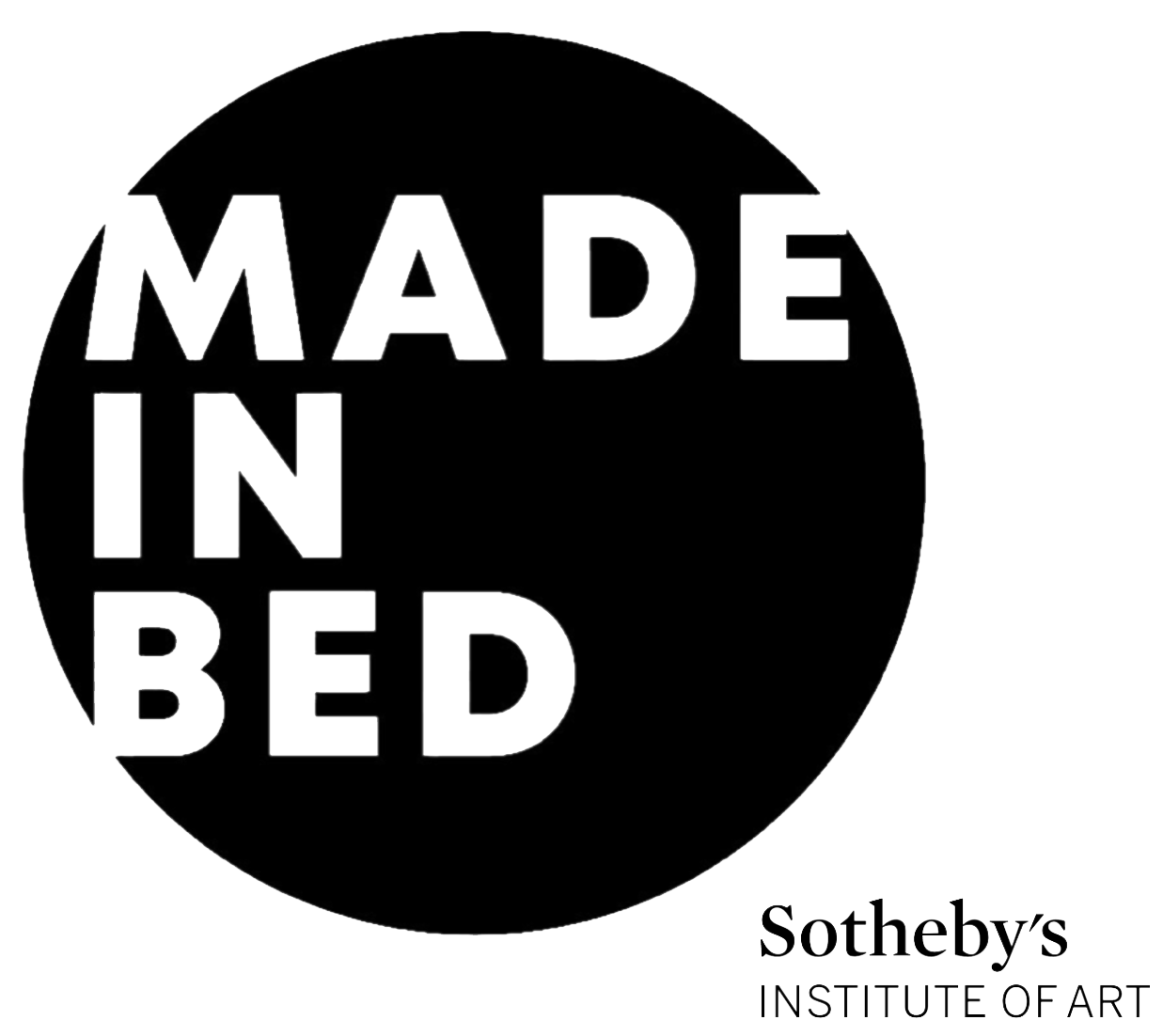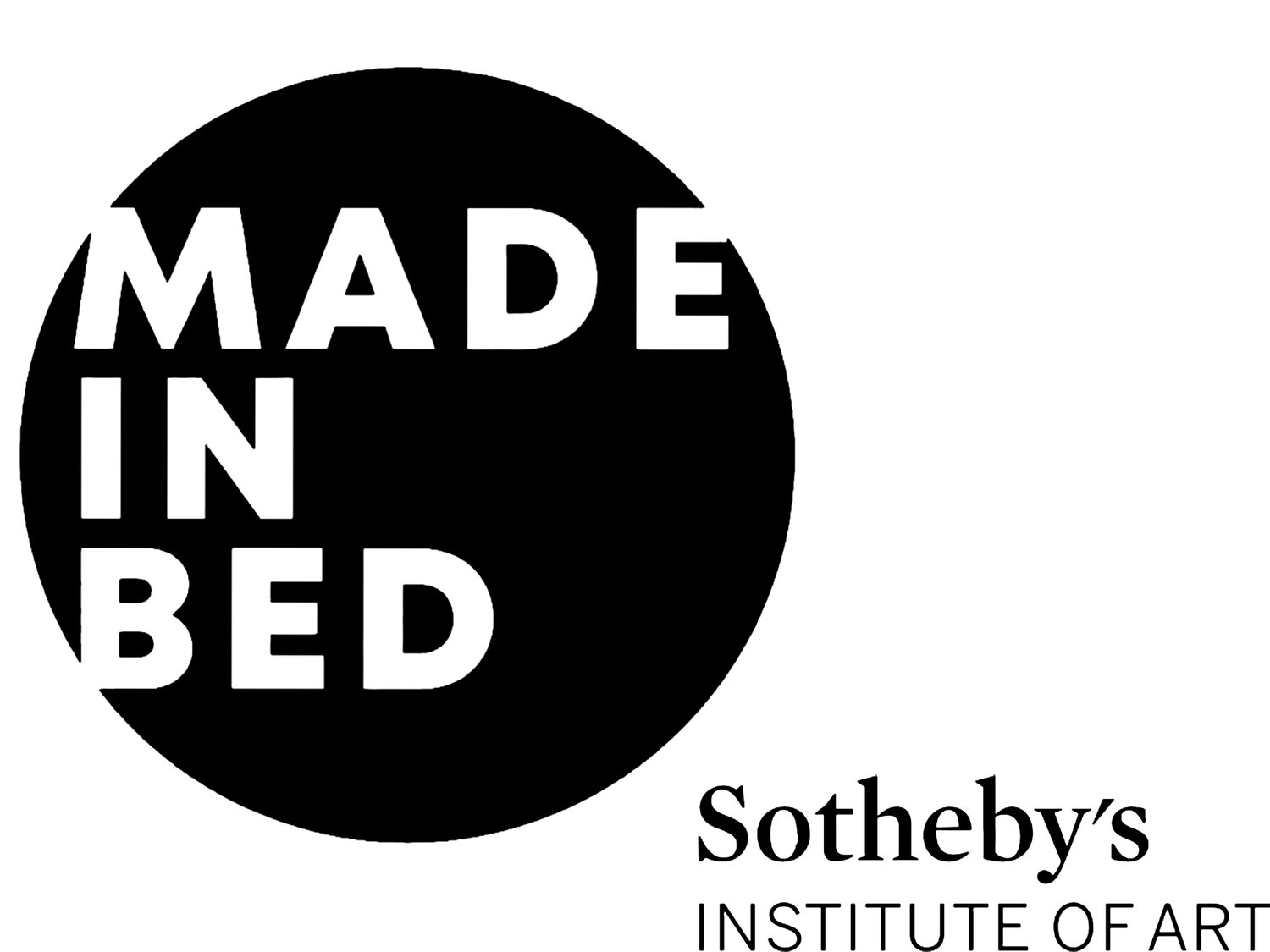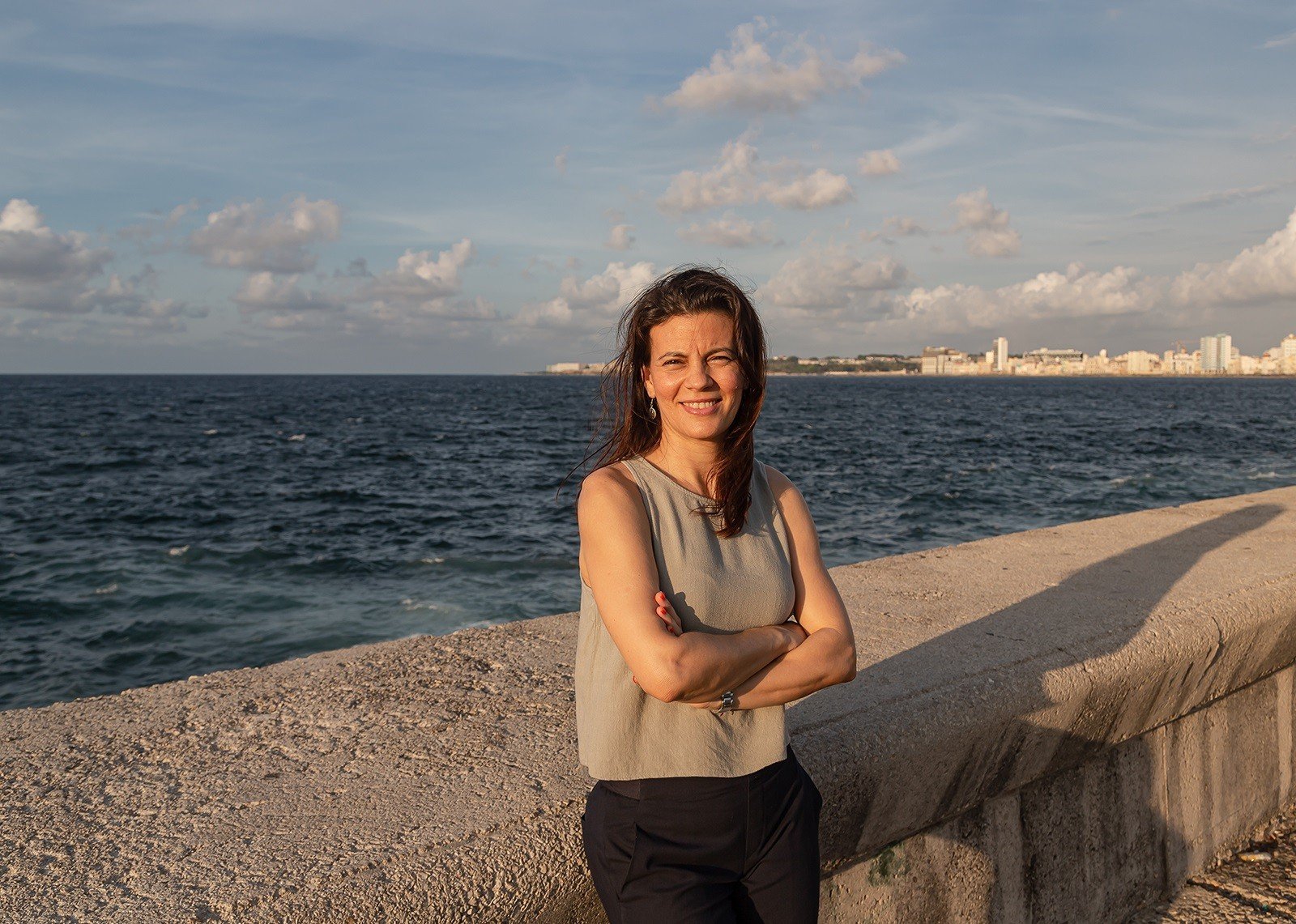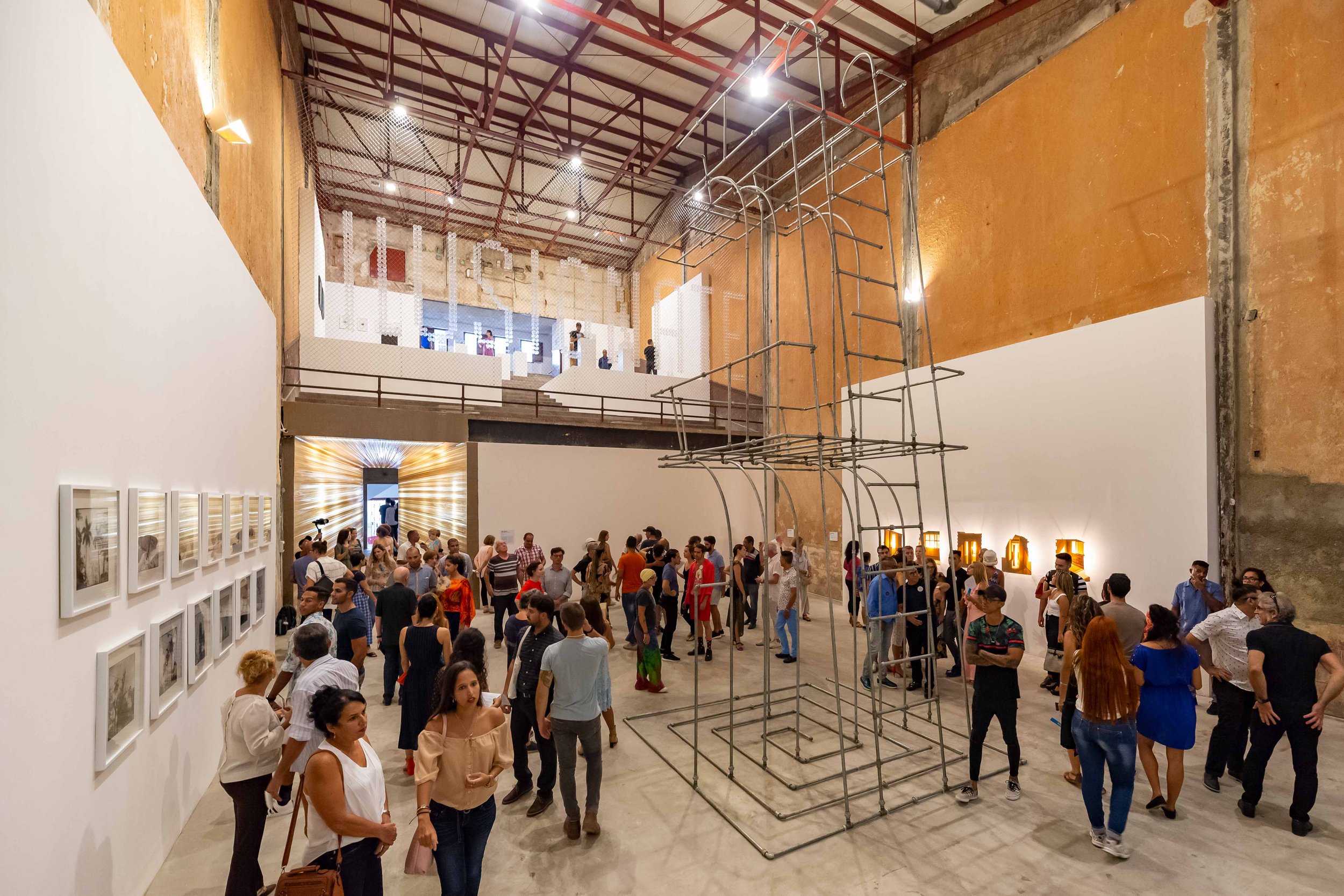MADE IN BED in conversation with Galleria Continua’s Niurma Pérez Zerpas
Niurma Pérez Zerpas is the Director of Galleria Continua’s Cuban headquarters in Havana, where she has led over 20 major exhibitions since 2019. As the gallery marks its 10th anniversary in Cuba, Niurma’s leadership is central to its identity as a bridge between Cuban and international contemporary art.
A native of Havana, Niurma studied Art History at the Universidad de Oriente in Santiago de Cuba (2005) and holds a Master’s in Community Cultural Development (2010). She has taught at the University of Las Tunas, where she led the Department of Sociocultural Studies, specialising in Art History, Cuban Art, and Cuban Cinema. Before joining Galleria Continua, she directed Servando Gallery, a key platform for emerging Cuban artists.
Portrait of Niurma Pérez Zerpas. Courtesy of Galleria Continua.
MADE IN BED: This year marks a decade since Galleria Continua opened its doors in Havana. What does this milestone represent for both you personally and for the Cuban art community at large?
Niurma Pérez Zerpas: The opening of Galleria Continua in Cuba was a groundbreaking moment in the history of contemporary Cuban art. For the first time, an international gallery established a permanent space in Havana, with a systematic program of high-quality exhibitions in an unconventional venue: the former Águila de Oro cinema-theatre in Chinatown. Over the past decade, we’ve hosted ambitious projects with artists including Anish Kapoor, Michelangelo Pistoletto, Daniel Buren, Op de Beeck, and Julio Le Parc, among others.
Julio Le Parc, Regreso, 2023. Photo by Néstor Kim. Galleria Continua Habana.
Equally important has been the extensive visibility it has provided to Cuban art. Numerous solo and group exhibitions featuring Cuban artists—often in dialogue with international artists—have taken place not only at the Havana location but also in various venues across Italy, France, Brazil, China, Dubai, and beyond. Publications such as Cuba Talks: Interviews with 28 Contemporary Cuban Artists by Jérôme Sans and Laura Salas Redondo; as well as numerous exhibition catalogues by Cuban artists, have also been made possible through Galleria Continua’s support.
On a personal level, it has been both a privilege and a joy to be part of the gallery’s history over the past ten years. I have had the opportunity to work with artists I deeply admire, learn from the experience of a gallery with 35 years of history, and collaborate with our incredible team at each of the gallery’s locations, as well as with its founders.
I have definitely enjoyed the creative freedom to develop proposals and contribute to the identity of a branch that, due to its unique context and location, faces distinct challenges and characteristics.
Anish Kapoor, Descent into limbo, Havana, 2016. Photo by Paola Martínez Fiterre. Galleria Continua Habana.
MIB: Tell us more about your 10th anniversary exhibition, La Capacidad de Soñar (The Ability to Dream). How did you approach curating such a diverse group?
NPZ: To celebrate the 10th anniversary of Galleria Continua in Cuba, we organized an exhibition featuring all the Cuban artists with whom we have collaborated over the past decade. This resulted in a roster of forty artists, providing a richer and more diverse perspective on the contemporary Cuban art scene—spanning from established masters to emerging talents.
The extensive list presented a significant challenge: the gallery space alone was insufficient. Ultimately, the exhibition was distributed across eight locations throughout Havana, from Old Havana and Centro Habana to Vedado and Playa, with notable venues including UNESCO Havana and the José Yaque Studio.
Installation View of The Ability to Dream in different locations. (Left to right: Galleria Continua Habana, UNESCO Habana, Habana Espacios Creativos, José Yaque Studio.) Photo by Linet Sánchez.
Each space took on a distinct character as we fostered dialogues between the artworks themselves and their surrounding environments. For instance, Yornel Martínez intervened in the former printing house of Havana’s Chinatown, integrating his work-in-progress among the original machinery. This piece explored independent publishing practices and proposed innovative typologies for editorial experimentation.
Arlés del Río’s Subway was installed in a public space at the entrance of the Museo Nacional de Bellas Artes (Universal Art building). On opening day, performances occurred throughout the city—including a performance by Wilfredo Prieto at Taller Chullima and a street happening by José Mesías around the streets of Havana.
José Mesías, Performance Untitled (Tweets through loudspeakers) from the Strange Birds Society Series, Havana City, 2025. Photo by José Mesías.
The dialogue with the artists during this exhibition was particularly enriching. Each of them embraced the invitation to participate in the 10th-anniversary show with enthusiasm and a strong sense of responsibility. In most cases, we engaged in careful discussions regarding the selection of artworks. Many pieces were created specifically for this occasion, while others—selected from earlier years—resonated perfectly within this new context.
MIB: Were there particular stories or collaborations that felt especially meaningful for this anniversary?
NPZ: One would be with René Francisco, whose piece Cobija occupies a central space in the main gallery due to its conceptual strength, scale, and striking presence. The installation rises nearly five meters high, crowned by a replica of the Alma Mater statue—an iconic figure at the entrance of the monumental steps of the University of Havana. In this version, the sculpture is "dressed" in a barricade-like structure made of sandbags and pillows, creating an imposing image that evokes zones of war and conflict. The artist proposal included photographs from the ongoing war in Ukraine, as well as sketches developed as part of his conceptualization. The subsequent discussions surrounding the piece’s content, its central placement, and the logistics of its construction proved to be incredibly enriching.
René Francisco, Cobija, 2025. Photo by Linet Sánchez. Galleria Continua Habana.
MIB: And what narratives did you hope international audiences would encounter?
NPZ: The exhibition provides a general overview of contemporary Cuban art through the perspectives of these 40 artists—from established masters to emerging voices—each engaging with pressing local and global issues. While this curated selection inevitably misses out on some significant figures, the show effectively showcases a diverse array of themes, visual languages, media, and forms of expression.
Another significant outcome was the gathering of this group of artists, many of whom now reside outside of Cuba, particularly in Spain, the United States, Mexico, and the Netherlands. Presenting this exhibition in Havana serves as a means to continue promoting the exceptional talent of Cuban artists—whether they remain on the island or have chosen to pursue their careers elsewhere.
MIB: Your own journey with Galleria Continua began in 2019. What drew you to the gallery, and how has your background shaped your approach as Director?
NPZ: In 2019, I was directing Galería Servando—a prominent gallery in Cuba dedicated to emerging art—when Lorenzo Fiaschi invited me to lead the Cuban branch of Galleria Continua. Naturally, I saw this as an outstanding professional opportunity, and I was equally excited about the prospect of continuing my work with several Cuban artists who had recently joined the roster of the Italian gallery. I believe my experience has played a role in expanding contact and collaboration with a wider array of Cuban artists beyond the gallery’s represented roster, supporting the individual development of many of these artists and fostering new dialogues between the works of Cuban and international creators, with the aim of blurring geographic boundaries.
MIB: Since then, you’ve directed over 20 exhibitions. Which ones stand out for you?
NPZ: All projects present a variety of challenges, while simultaneously offering unique experiences. If I were to highlight a few, I would mention Umbrales, my first curatorial project at the gallery alongside Lorenzo Fiaschi. The show was inspired by the literary work The Arcades Project (Das Passagen-Werk), one of the key texts by German philosopher Walter Benjamin. In this work, Benjamin frequently referred to “thresholds” (umbrales) both in their literal and metaphorical senses. For the exhibition, the artists were invited to reflect on thresholds—those that delineate the boundary between the private and the public. These thresholds may represent physical spaces as well as mental constructs; they signal a beginning, an initial movement, and a point of departure, filled with sensations and experiences.
Installation View of Umbrales, 2019. Photo by Norlys Pérez. Galleria Continua.
MIB: Galleria Continua often operates beyond the conventional art scene, balancing local voices with an international roster. What have been the challenges and rewards of maintaining that balance in Havana’s particular context?
NPZ: Precisely the balance—integrating local voices with an international program, while often dissolving the boundaries between the local and the universal, has been one of Galleria Continua’s most significant contributions to the Cuban context.
This approach has yielded mutual rewards, benefiting both the contemporary Cuban art scene and the gallery’s own development. As is widely recognized, part of the gallery’s identity is rooted in launching projects in places where others have not ventured, frequently far from the established circuits of the international art world—and Cuba is no exception.
The country is currently undergoing a severe economic and social crisis, confronting numerous challenges that render any project a substantial endeavor. However, after ten years, the benefits have become much more apparent.
Pascale Marthine Tayou & Michel Pérez Pollo, Vidas Paralelas, 2022. Photo by Néstor Kim. Galleria Continua Habana.
MIB: Could you share one or two artists whose trajectory particularly reflects this journey?
NPZ: When Galleria Continua first opened its space in Cuba, it had only one Cuban artist on its roster: Carlos Garaicoa, with whom the gallery had already been working for several years. However, discovering the work of other artists in Havana and visiting their studios inspired the founders to expand their commitment by including nine additional Cuban artists: Alejandro Campins, Yoan Capote, Iván Capote, Elizabet Cerviño, Luis López-Chávez, Osvaldo González, José Mesías, Susana Pilar, and José Yaque.
Undoubtedly, each of their careers has flourished significantly over the past decade — not only due to the visibility provided by the gallery but also thanks to its support for the production and promotion of ambitious, large-scale works across diverse contexts.
Osvaldo González, Estados, 2024. Photo by Néstor Kim. Galleria Continua Habana
José Yaque’s trajectory has been remarkable, from his first solo at the gallery’s San Gimignano space in 2015 to his monumental Tumba Abierta (Open Grave) series installation for the Cuban Pavilion at the Venice Biennale in 2017, and a large-scale version at Art Basel Unlimited in 2018. Susana Pilar has also experienced a rapid and impressive ascent; her primarily performative practice explores the body, gender, race, and social issues. As for Yoan Capote, his collaboration with Galleria Continua began when his career was already on the rise.
Susana Pilar Delahante, Performance Dibujo Intercontinental, Venecia, 2017. Photo by Oak Taylor-Smith
MIB: The gallery space in Havana has some distinctive features. How has operating in a site with so much history continued to shape the gallery’s curatorial vision over time?
NPZ: The building features expansive dimensions, a ceiling height of 12 meters, a stage area, a video room, an impressive viewpoint from the second floor, and a smaller third-floor room that still houses the cinema’s original projectors. The Águila de Oro cinema retained its essence; its walls and structure bore the traces of history while simultaneously becoming a space for confrontation and dialogue within contemporary art—a curatorial and museographic challenge each time. I remember the opening of the inaugural 2015 show, Anclados en el Territorio (Anchored in the Territory), as a deeply emotional event. Six Cuban artists explored the Chinatown community from different perspectives.
In its early years, several group exhibitions were held in succession, with artworks being added and accumulated within the space. This approach served to introduce multiple artists and foster a sense of belonging by allowing them to feel “at home”, as if presenting a large, extended family.
In January 2016, Anclados en el territorio expanded with the exhibition Tú + Yo = Nosotros (You + Me = Us), featuring Italian artists. Four months later, the gallery showcased new works by Francophone artists Etel Adnan, Kader Attia, Daniel Buren, and Pascale Marthine Tayou in the exhibition titled Ensemble.
Installation View of Ensemble, 2016. Photo by Paola Martínez Fiterre. Galleria Continua Habana.
In July 2016, the exhibition Cuarteto (Quartet) introduced works by Chinese artists Ai Weiwei, Chen Zhen, Gu Dexin, Kan Xuan, Qiu Zhijie, and the collaborative duo Sun Yuan & Peng Yu. By the end of this [2016] cycle, the space was nearly filled with works by twenty artists from around the globe.
The artworks' adaptation to the space—harmoniously integrating with those that preceded them and revealing internal connections—symbolically reflected the island’s architectural eclecticism and the evolution of Cuban identity shaped by centuries of cultural syncretism. This curatorial practice of generating new dialogues—sometimes through addition and other times through replacement—has been employed on various occasions over the past decade.
Installation View of Cuarteto, 2016. Photo by Paola Martínez Fiterre. Galleria Continua Habana.
MIB: How would you describe the gallery’s evolving relationship with Havana’s cultural ecosystem?
NPZ: Galleria Continua's work in Cuba has extended beyond its venue in Havana's Chinatown. Notable highlights include Daniel Buren's Promenade à La Havane—an in situ piece that involved the intervention of approximately 20 family home doors across Centro Habana and Old Havana municipalities, many of which remain today.
Daniel Buren_Promenade à La Havane_2015_work in situ_courtesy of Galleria Continua_Photo by Paola Martínez Fiterre
Since the gallery’s early days, the “Talleres Cre-Arte en Continua” have been launched to foster critical thinking, creativity, and environmental responsibility among children and young people. Many of these workshops are developed in partnership with local community projects, addressing social needs and challenges within Havana’s Chinatown and the broader urban context. A special role is played by the “Zonas Rayo Activas”—community events organized in collaboration with private enterprises in public spaces or neighborhoods that require increased visibility and engagement. On the other hand, the “Charlas Continua” have become a regular forum for discussions about art, bringing together artists, art critics, curators, and the general public.
¨CRE-ARTE en Continua¨ Workshop for Children with artist SERSE. Galleria Continua Habana, 2017.
MIB: What aspects of the Cuban art world today do you think international audiences might not yet fully grasp?
NPZ: Cuba has remained a focal point that, at various times, has drawn individuals to the island who are interested in its social context, art, and artists. The high caliber of Cuban artists is well recognized—many of whom are graduates of the Instituto Superior de Arte (ISA) in Havana and the country’s Fine Arts Academies. For several years, artists have gained access to scholarships, awards, artist residencies, and exchange programs that have significantly influenced their professional development and helped promote their work.
However, it is also true that the visibility of Cuban artists still lags behind that of artists from other contexts. It would be beneficial to take a closer look at painting by artists from various generations, including the work of many young and mid-career artists whose careers are not necessarily supported by galleries, as well as the extensive community of artists living in the diaspora, particularly in Spain, the United States, and Mexico. Within this landscape, the presence of Galleria Continua in Havana has played a crucial role in enhancing the visibility and promotion of contemporary Cuban art, both within Cuba and beyond.
Gabriel Cisneros & Alejandro Campins, Zona Pública, 2024. Photo by Néstor Kim. Galleria Continua Habana
MIB: As Galleria Continua looks toward its next chapter, what are your hopes for the Havana branch? Are there particular projects or directions you're excited to explore?
NPZ: The program commemorating Galleria Continua’s ten years in Cuba was merely a brief interlude—a moment to celebrate Cuban art and a decade of dedication on the island. There are still several projects waiting to be realized. I am interested in organizing solo exhibitions for roster artists whose discourse and impact are particularly relevant to the Cuban context; fostering new dialogues between Cuban and international artists that address the complex challenges of our times; and continuing to expand opportunities for collaboration with Cuban artists, regardless of their location.
MIB: Finally—what does “the ability to dream” mean to you right now, here in Havana?
NPZ: The title of the exhibition was taken from the documentary of the same name produced by Sky Arte & Tiwi Studio, which explores the history of Galleria Continua. It is an open and poetic phrase that encapsulates one of the essential qualities of art. For me, “the ability to dream” is a precious gift that belongs to every individual. Nothing and no one can hinder our will to dream and envision new realities. I embrace this concept as a positive and encouraging idea from which, in the realms of both art and life, everything becomes possible.
It is remarkable for any gallery to endure a decade in today’s global economic climate — even more so in Havana. Beyond mere survival, , Galleria Continua Habana has become an anchor for its community, championing artists and building enduring ties with local projects, institutions, and cultural figures. Its tenth anniversary was as much the city’s celebration as the gallery’s, reflected in the wide range of organisations that joined the exhibition. At the heart of this is Niurma Pérez Zerpas, who understands the gallery’s history and the importance of such a space as a backbone for Cuban cultural life. As she reminds us, our gaze should extend beyond Havana to the Cuban diaspora — to those who carry the city in their hearts.
10 Años En Cuba
La Capacidad de Soñar (The Ability to Dream)
will be on at Galleria Continua in Havana until 16 August 2025.
Many thanks on behalf of MADE IN BED to Niurma and Galeria Continua.
Daniel Buren. Promenade à La Havane, 2015. Photo by Paola Martínez Fiterre. Courtesy of Galleria Continua Habana.
Alice Kim & Kiah M. Sandler
Interviews Co-Editors, MADE IN BED
























